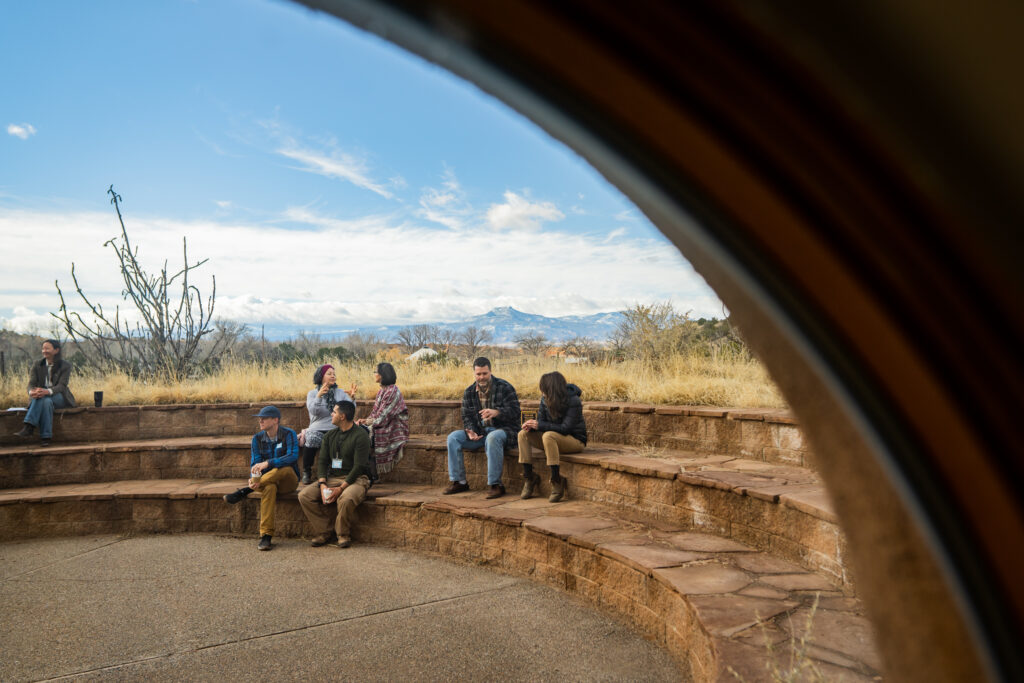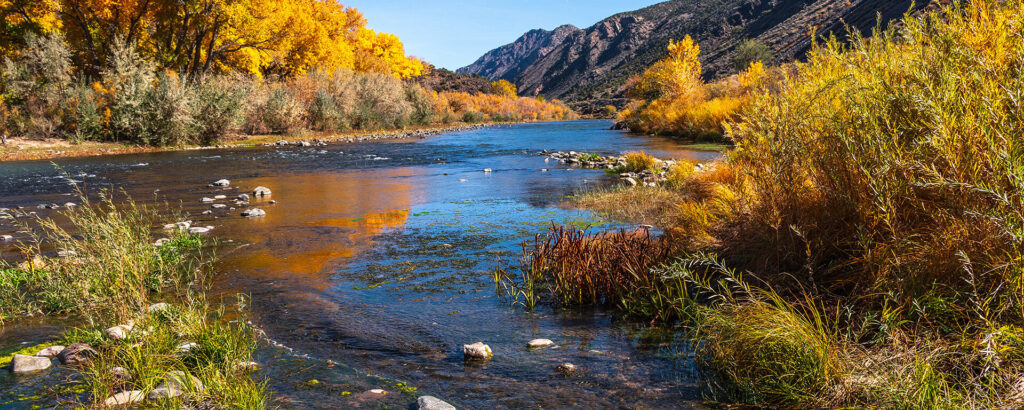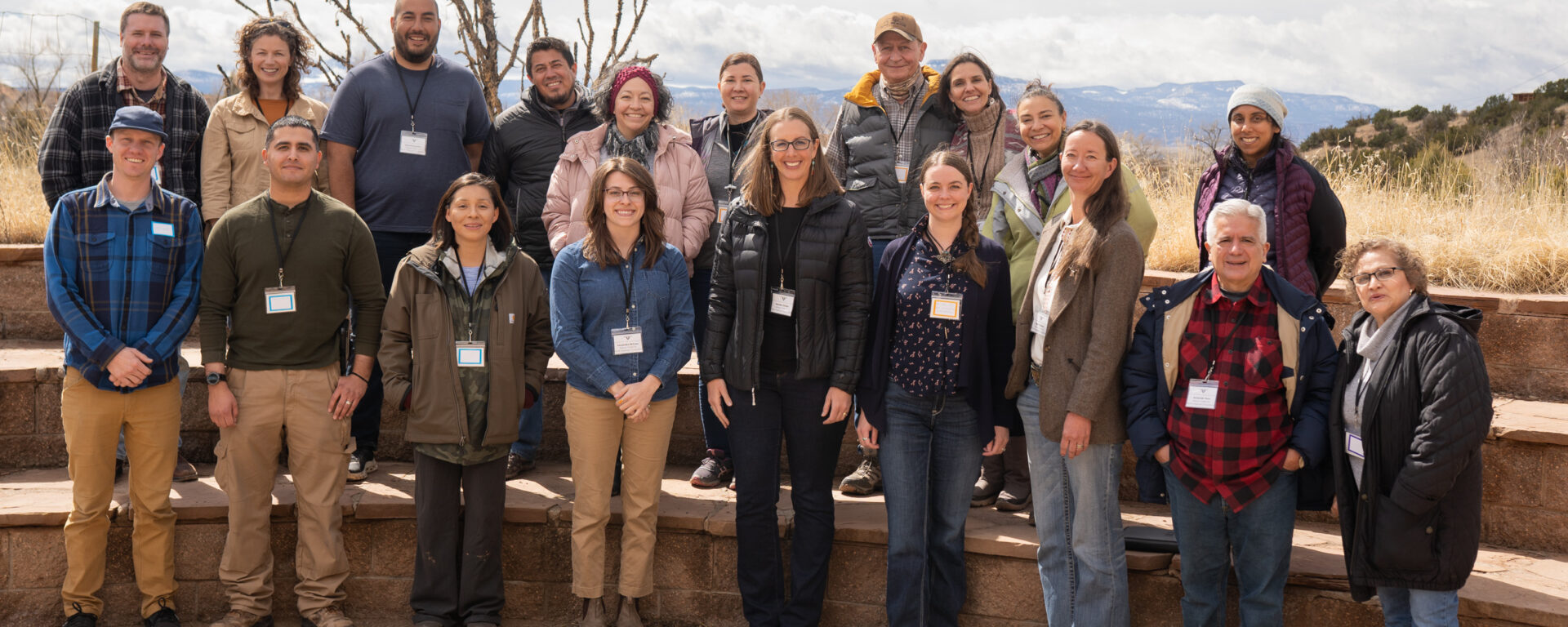The Salazar Center recently announced the inaugural cohort of project teams accepted into our Peregrine Accelerator for Conservation Impact. Each of these groups is working to realize innovative conservation solutions in the Rio Grande/Rio Bravo River basin—which spans our southern border, across Colorado, New Mexico, and Texas in the US, and into Chihuahua, Coahuila, Nuevo Leon, Tamaulipas, and Durango in Mexico.
Hope shines bright in Abiquiu
One of the strengths of this cohort that I’m most excited about is its diversity. The organizations represented by the nine teams range in size and scope; the individuals from each team in profession and career stage; and their proposed projects in stage, scale, and geography.
I’ve had the opportunity to get to know these groups quite well through the proposal review and selection process, and it’s clear that they all share two things in common: a commitment to bettering the ecological and community health of the basin, and some sort of barrier or challenge to implementing their ideas for change in the Rio. It is this common ground that forms the foundation of our first Peregrine Accelerator cohort, and it shone brightly through the literal rain and fog in our time together last month at Ghost Ranch, in Abiquiu, New Mexico—which itself sits along the banks of the Rio Chama, a tributary of the Rio Grande, in the middle stretch of the basin.
Poised for impact

One purpose of the Peregrine Accelerator program is to advance, with both funding and capacity-building resources, these groups’ ideas for better conservation outcomes in their region—but the program is also intended to cultivate and support a community of interest built on trust, mutual ambition, and peer learning. Gathering in-person was the first step this cohort took in creating that community.
For me, it was a privilege to see conversations spring up about potential partnerships, light bulbs go off as folks found ways to learn from and lean on one another, and new friendships form. Combined, this group represents hundreds of years of experience and expertise, and a wealth of deep knowledge and passion. With this shared asset mobilized behind nine distinct conservation solutions—from ecological restoration and increasing recreation access to urban water banking and binational water governance—both the cohort and its ultimate collective impact are greater than the sum of their parts.
Why this basin?
It is important to note that the Rio basin is especially ripe for this kind of program. It comprises cities, working lands, protected areas, and a variety of habitats and critical wildlife corridors. On both sides of the border, the population is booming; an estimated 12-13 million people—including residents of the eight pairs of sister cities in the basin and dozens of Indigenous and Tribal communities—are dependent on the river for water for irrigation, drinking and household consumption, environmental health, cultural activities, and recreation.
The basin contains some of the most biodiverse ecosystems in North America, and it supports diverse economic activities, from agriculture and natural resource extraction to recreation and tourism. The Rio Grande is one of the ten most endangered rivers in the world, and at the same time, one of the least invested in, in terms attention, resources, and philanthropic funding, especially when compared to the other large, transboundary basin in the region—the Colorado River. As such, the basin represents a unique set of challenges, but also opportunities for new and different approaches to conservation.
The whole is greater than the sum of the parts
Now that I’ve had the opportunity to meet with the cohort as a whole, I feel more confident than ever that we have the right combination of willpower, resources, and talent to not only help each group achieve their own proposed projects, each with their own unique and significant impact, but to also connect organizations and initiatives across the basin—and on both sides of the international border—that wouldn’t have otherwise crossed paths for, ultimately I hope, greater collective impact in the region. As one cohort member put it, “I don’t know if I had ever thought about being a part of the whole basin… and now I have this sense of being a part of something greater, that I’m working in harmony with many others toward common goals.”

Everyone is back in their respective locales after time well spent together, and the cohort is moving through several months of tailored mentorship and training, while building and leaning on the community that they started to build in New Mexico. It’s not possible to know all that they will be able to accomplish, but I do know that I’m quite proud, and excited, to be part of it.
You can follow the progress of the Peregrine Accelerator projects on our website.
